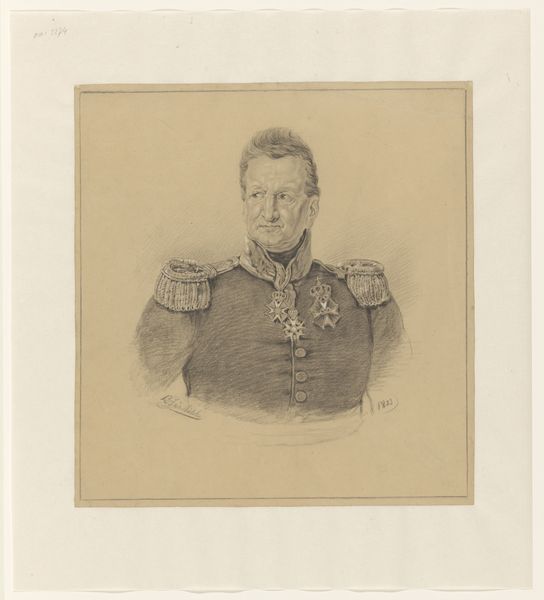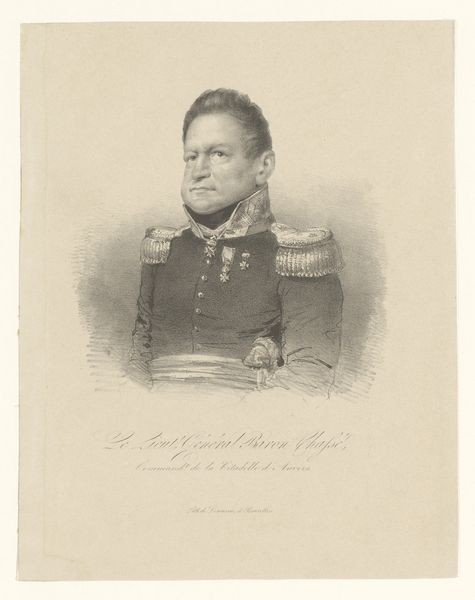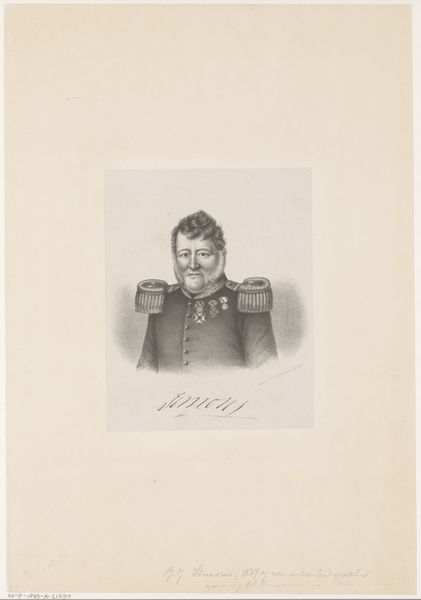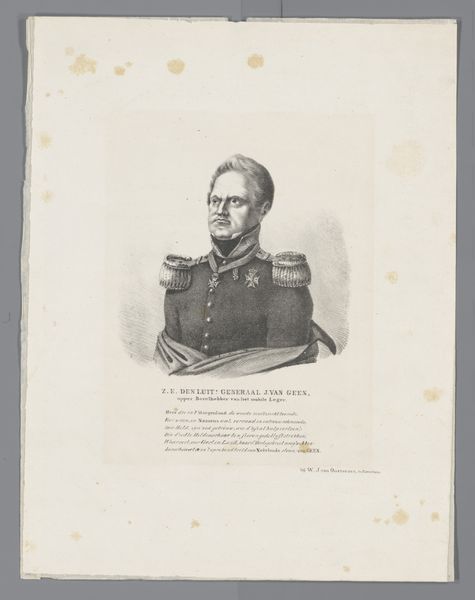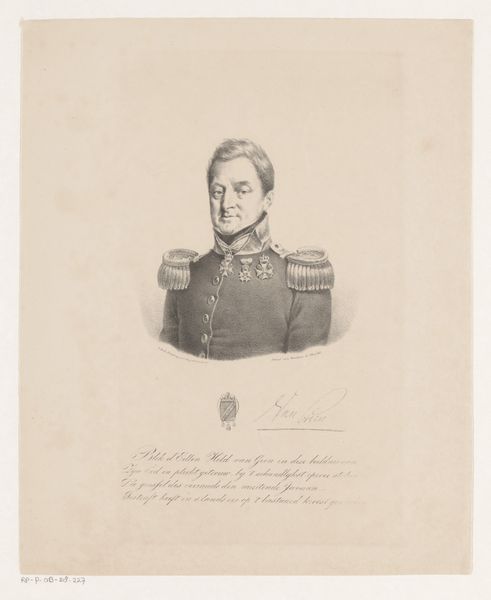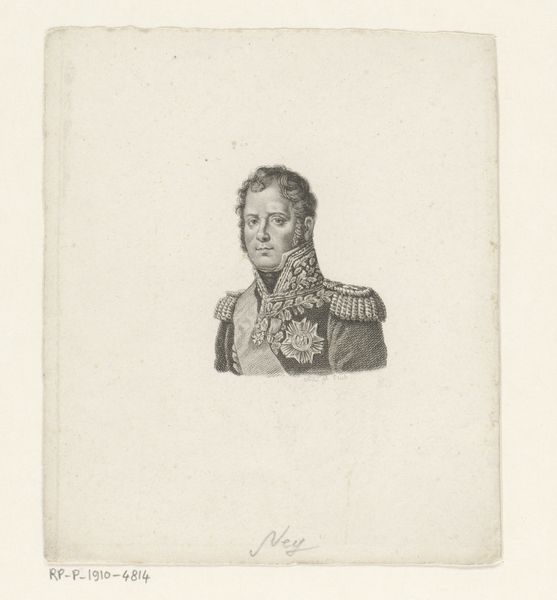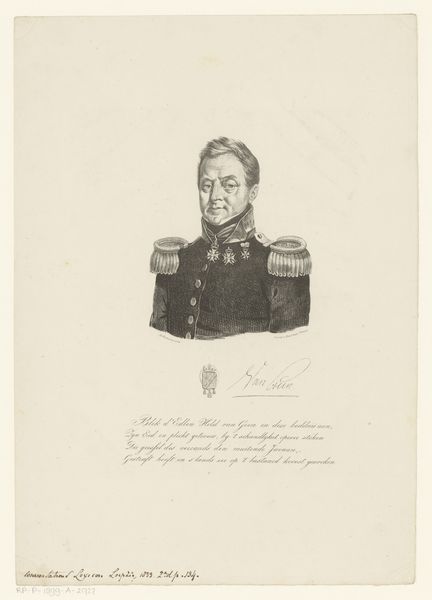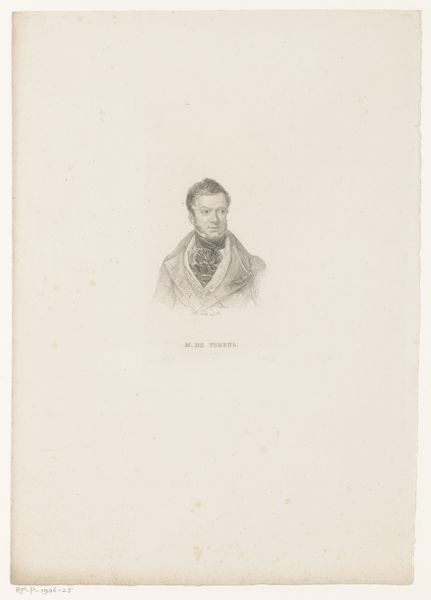
drawing, print, graphite
#
portrait
#
pencil drawn
#
drawing
# print
#
pencil sketch
#
old engraving style
#
pencil drawing
#
romanticism
#
graphite
#
genre-painting
#
history-painting
#
academic-art
Dimensions: height 297 mm, width 234 mm
Copyright: Rijks Museum: Open Domain
Curator: I find this portrait, believed to be made between 1828 and 1843, quietly commanding. There's a certain stoicism etched in the lines. Editor: The lithographic rendering certainly gives it an air of authority, a kind of 19th-century officialdom laid bare through the relatively new technology of mass reproduction. Do we know anything about who made it and how it came about? Curator: Indeed. It’s a print derived from a drawing by Theodoor Soeterik depicting David Hendrik Chassé, a lieutenant general. It presents the material reality of power at that time: lithography meant affordable and widespread distribution, ideal for enshrining a military figure in the public eye. There’s a direct relationship between technology, politics and reputation here, wouldn’t you say? Editor: I couldn’t agree more! It's as much about the *making* of a national hero as it is about the man himself. But does that technical process then perhaps diminish its artistic value for you? Or do you find a different kind of art being made? Curator: It depends how you want to interpret it. Yes, lithography made it easier to circulate images like this one. But it also makes it very immediate. See how his coat's details aren't painted with oil but rendered with just simple graphite strokes! They feel almost as delicate, but certainly more rough and immediate. As an artist, I often reflect upon how to balance technical process with creative freedom. And, even when Soeterik was bound to represent an established figure of authority, it still makes me wonder: what kind of impression did Chassé leave on *him*? How did that affect the kind of lines he chose, and the shadows that emerge from them? Editor: I see what you mean. In its apparent simplicity, it highlights that portraiture itself can be seen as a social transaction, full of subtle decisions related to access, class, and intended reception. I'm increasingly convinced this isn't only about likeness, but an engagement with materiality that echoes the social relationships of the time. Curator: Yes! Editor: Well, thinking about how things are produced and why certainly deepens the entire story of this particular drawing, or print – both material facts we can see playing out before us! Curator: For sure. Thank you!
Comments
No comments
Be the first to comment and join the conversation on the ultimate creative platform.


